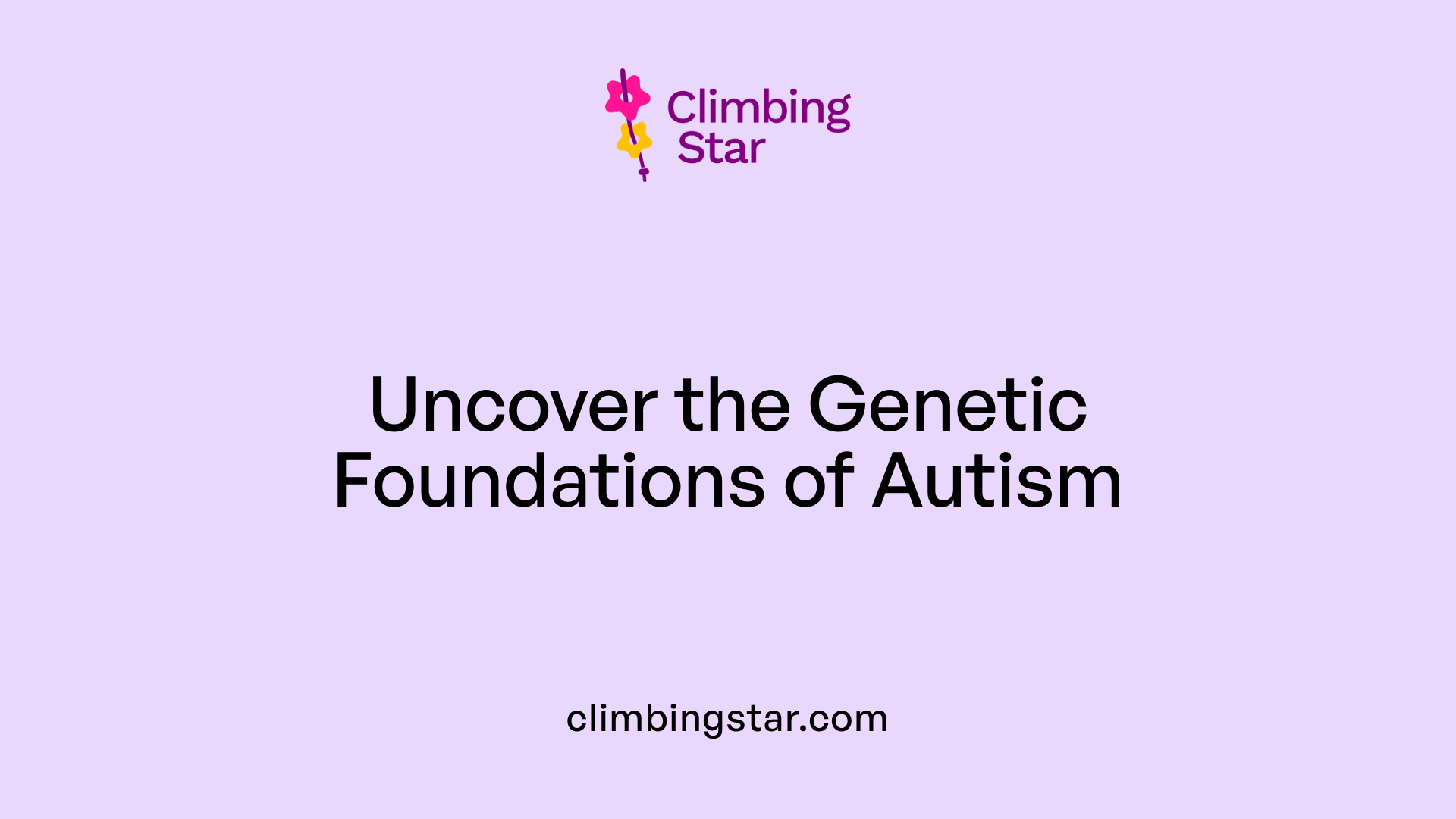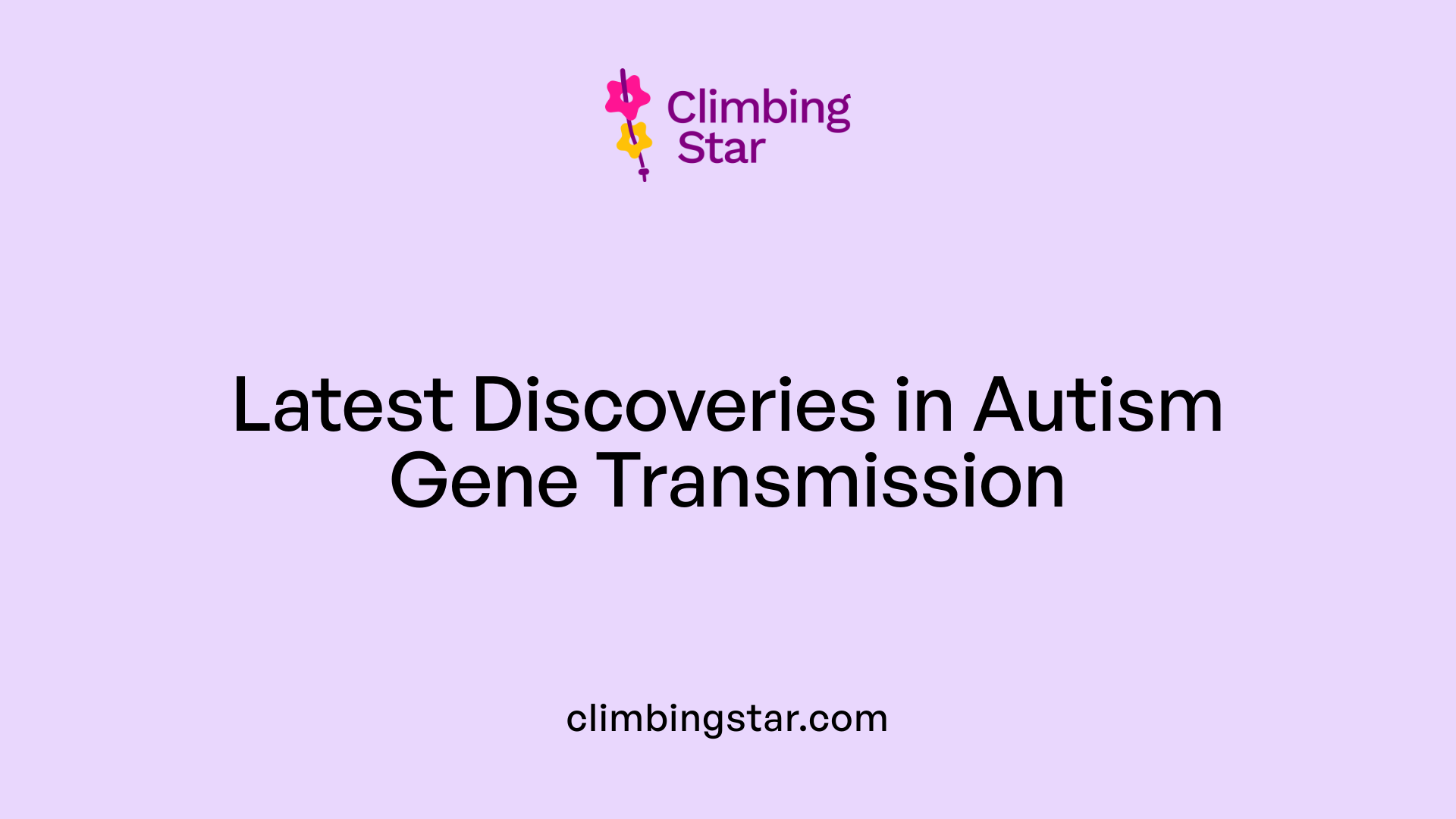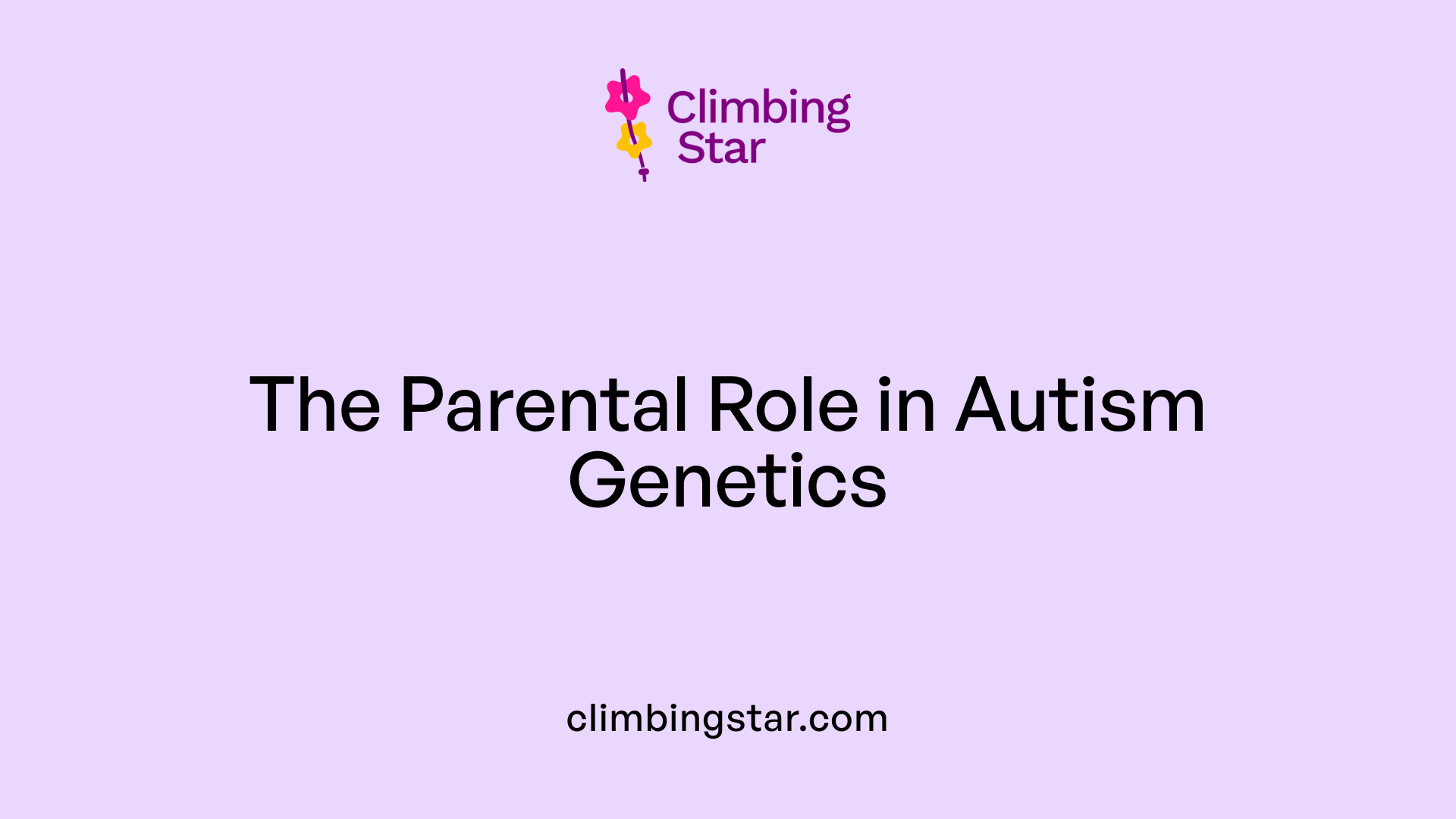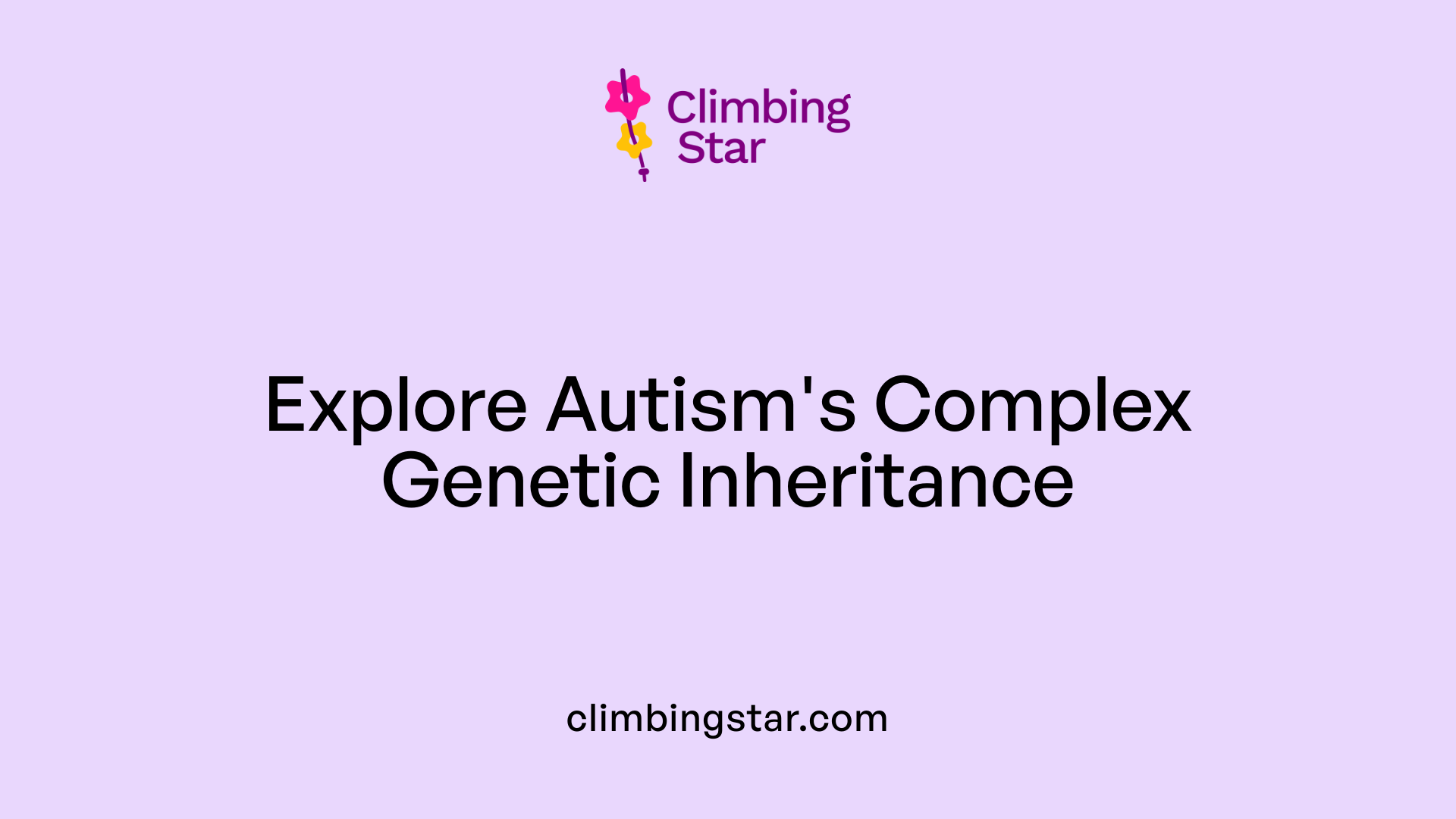Understanding the Genetic Foundations of Autism
Autism Spectrum Disorder (ASD) is a complex neurodevelopmental condition with strong genetic underpinnings. The question of which parent more commonly carries the autism gene has intrigued researchers for years, driven by advances in genomics and twin studies. This article explores the latest scientific findings to shed light on the parental origins of autism, examining inheritance patterns, the role of spontaneous mutations, and the biological processes involved.
Genetic Basis of Autism and Its Heritability
Is autism inherited genetically?
Autism is largely passed down through genetic inheritance, with studies estimating that between 70% and 90% of autism risk can be attributed to genetic factors. Researchers have identified over 800 genes associated with autism, highlighting the complexity and polygenic nature of the condition. These genes influence key processes during early brain development, impacting neuronal communication and brain region interactions.
The strong genetic influence is supported by heritability studies, which show that a significant portion of autism risk is inherited. Parents can carry genetic variations, including specific mutations and chromosomal differences, that increase the likelihood of autism in their children. These genetic factors can be inherited from either parent, and their contribution is often complex, involving multiple genes working together.
In addition to inherited variations, spontaneous mutations—changes in the child's genes that occur during the formation of sperm or egg—also play an important role. About half of all autism cases with only one affected individual in a family result from such spontaneous mutations. These mutations can severely disrupt gene function, especially when both gene copies are impacted.
Environmental influences, such as parental age and prenatal exposures, can slightly increase autism risk but are less prominent than genetic factors. Overall, the scientific consensus emphasizes a predominantly genetic basis for autism, with gene-environment interactions further shaping individual susceptibility.
| Aspect | Description | Additional Details |
|---|---|---|
| Percentage of genetic risk | 70-90% of autism cases | Supported by twin studies and genetic research |
| Number of associated genes | Over 800 genes identified | Many involved in early brain development and neuronal network formation |
| Types of genetic factors | Inherited gene variations, de novo mutations, chromosomal alterations | Affected by parental age and spontaneous genetic changes |
| Influence of environment | Prenatal exposures, parental age, birth complications influence risk | Less prominent but relevant in gene-environment interactions |
| Modes of inheritance | Autosomal, X-linked, maternal, paternal, spontaneous mutations | Both parents can pass on autism-related genetic markers |
The overall picture shows that autism results from a complex interplay of genetic factors inherited from both parents and spontaneous genetic mutations. While environmental factors can influence risk, the predominant driver remains genetics, documented through extensive research and genetic analyses.
Biological and Genetic Causes of Autism

What are the biological and genetic causes of autism?
Autism spectrum disorder (ASD) arises from a complex interplay of genetic and biological factors. Extensive research shows that over 800 genes are involved in ASD, impacting pathways critical for brain development and neuronal function.
Common genetic variations include chromosomal duplications and deletions, such as those at 15q11.2 and 16p11.2, which have been linked to increased autism risk. These genetic alterations can disrupt normal brain development processes, leading to differences in how neurons connect and communicate.
Genetic influence in autism is remarkably strong, with heritability estimates ranging from 70% to 90%. Twin studies support this, illustrating that genetics account for most of the risk, and many individuals with ASD have identifiable genetic syndromes like Fragile X and Rett syndrome.
Genetic factors contribute to key aspects of brain structure and function. Many autism-related genes are involved in chromatin remodeling, which influences how genes are expressed, and in signaling pathways such as Wnt and Notch that are crucial for neuron growth and network formation.
These gene variations can affect how brain regions communicate and develop connections, impacting cognitive and social functions. They influence how neurons form networks, how different parts of the brain relay information, and how neural circuits are assembled during early development.
Environmental influences also play a role, interacting with genetic predispositions through mechanisms like epigenetics. Factors such as prenatal exposure to toxins, maternal health issues, and birth complications can modify gene expression without altering the DNA sequence itself, further increasing the likelihood of ASD.
Importantly, vaccines do not cause autism. Scientific studies have consistently confirmed that there is no connection between vaccination and ASD, reassuring that genetic and biological factors are the primary contributors.
| Genetic Factors | Impact on Brain Development | Notes |
|---|---|---|
| Over 800 genes | Affect neuronal connectivity, brain regions communication | Includes chromatin remodeling, signaling pathways |
| Chromosomal variations (e.g., 15q11.2, 16p11.2) | Disrupts neurodevelopment | Linked with syndromes like Fragile X |
| Mutations in neurodevelopment genes | Alter brain structure, neural networks | De novo mutations also significant |
| Epigenetic changes | Influence gene expression without DNA change | Modulate environmental interactions |
Scientific Research and Transmission of Autism Genes

What does scientific research say about autism gene transmission?
Extensive scientific studies underscore the strong role genetics plays in autism. Twin studies, considered some of the most reliable evidence, reveal a heritability estimate of approximately 98% in monozygotic (identical) twins, meaning that both twins almost always share autism if one is affected. For dizygotic (fraternal) twins, the correlation drops to about 53-67%, further emphasizing a significant genetic contribution.
Genome-wide analyses have made important breakthroughs in identifying specific autism risk genes. Researchers have pinpointed more than 100 genes associated with autism, including SCN2A, SHANK3, and PTEN. Many of these genes are involved in critical neurodevelopmental processes like synaptic function, gene regulation, and neural connectivity.
Apart from inherited mutations, rare de novo mutations—those that occur spontaneously in the child's genome and are not inherited from parents—also play a crucial role. These mutations tend to affect genes that guide brain development and neuronal communication, often disrupting pathways essential for normal neurodevelopment.
Most of the genetic risk, approximately 80%, stems from inherited genetic variations. These are typically rare variants passed down from unaffected parents who may, nonetheless, carry genetic markers linked to autism risk. These inherited variants often interact with common polygenic factors—many small-effect genes—culminating in increased autism susceptibility.
Recent large-scale sequencing efforts have allowed researchers to identify specific genes with higher confidence, such as SCN2A and SHANK3. These genes influence synaptic structure and neuronal signaling. The interplay of numerous genetic variants, both common and rare, creates a complex genetic network that influences autism risk.
In summary, autism susceptibility results from intricate interactions among inherited genetic mutations, spontaneous mutations, and environmental influences during prenatal development. Genetics provides a substantial foundation for understanding autism transmission, but it works together with environmental factors to shape individual outcomes.
Below is a simplified overview of genetic contributions:
| Aspect | Description | Example Genes | Additional Notes |
|---|---|---|---|
| Heritability | High estimates from twin studies | N/A | 98% for monozygotic twins |
| Inheritance | Most risk linked to inherited mutations | SCN2A, SHANK3 | Common and rare variants |
| De novo mutations | Spontaneous mutations affecting neurodevelopment | N/A | About 50% of cases, often in unrelated genes |
| Genetic interactions | Complex interplay of multiple genes | Various | Polygenic and gene network effects |
| Environmental factors | Smaller yet contributory | Pesticides, parental age | Interact with genetic vulnerability |
This picture highlights the complexity of autism’s genetic landscape, where multiple factors converge to influence risk and inheritance patterns.
Parenting and Parental Contributions in Autism Inheritance

Both parents can carry autism-related genes, with no sex bias
Autism is influenced by genetic factors inherited from both parents, regardless of whether they are male or female. Research confirms that both mothers and fathers can pass on genetic variations associated with autism, showing that the inheritance is not biased towards one parent.
Paternal contribution often more significant in transmitting mutations
Studies highlight a notable influence from the father in passing on autism-related mutations. For instance, twin studies and genome analyses reveal that siblings with autism tend to share more genetic material from their father than their mother. Additionally, de novo mutations—new genetic mutations not present in parents—are more common in children of older fathers, emphasizing the impact of paternal age.
Studies show stronger sharing of paternal genes among siblings with autism
Research using large genetic databases demonstrates that autistic siblings share higher genetic similarities at the paternal genome. These findings suggest that paternal inherited variations and mutations play a larger role in autism risk and transmission.
Paternal de novo mutations more common, especially with advanced paternal age
De novo mutations often originate during sperm development. The likelihood of these mutations increases as paternal age advances, making older fathers more likely to pass spontaneous genetic changes linked to autism. This contributes significantly to autism cases without a family history.
Both parents contribute genetic variations that can be inherited or spontaneous
Autism inheritance is complex, involving both inherited genetic variations and spontaneous mutations. Inherited mutations originate from the genetic code passed down from parents, while spontaneous mutations occur randomly during sperm or egg development.
Mother's genetic traits, particularly language-related, may signal risk
Certain traits in mothers, especially those related to pragmatic language skills, have been associated with a genetic predisposition for autism. Mothers with high polygenic scores for autism tend to pass these genetic markers to their children and may display subtle traits linked to autism spectrum conditions.
Inheritance involves polygenic traits, not single genes
Autism has a polygenic basis, meaning it involves many different genes rather than one specific gene. This complexity makes it challenging to pinpoint a single cause. Instead, the combined effect of multiple genetic variations influences autism risk.
| Parental Contribution | Type of Genetic Input | Notable Features | Impact on Autism Risk |
|---|---|---|---|
| Mother | Inherited & Spontaneous | Language traits, mutations | Moderate risk, often linked to language difficulties |
| Father | Inherited & Spontaneous | De novo mutations, older age | Significant contributor, especially through de novo mutations |
| Both parents | Combined genetics | Variations inherited & new mutations | Complex risk profile involving multiple factors |
Understanding how both parents contribute to autism through a mixture of inherited and spontaneous genetic changes helps in appreciating the complexity of autism’s genetics. Ongoing research continues to uncover the nuances of these genetic influences, aiming to improve diagnosis and intervention strategies.
Spontaneous Mutations and Autism Occurrence
What are spontaneous mutations, and how do they relate to autism?
Spontaneous mutations are genetic changes that happen during the formation of sperm or eggs. These mutations are not inherited from the parents but occur anew in the child's genome.
Approximately half of all autism spectrum disorder (ASD) cases are caused by these spontaneous or de novo mutations. They can significantly influence the likelihood of developing autism.
Mutations can affect both copies of a gene in a child's genome. When both copies are altered, the impact on brain development and function can be more severe, increasing autism risk.
Since these mutations are not inherited, they occur randomly during the development process. This means a child can develop autism even if there is no family history of the condition.
Spontaneous mutations can directly impact genes that regulate early brain development. Changes in these 'risk genes' can alter neuronal communication and network formation, which are crucial for normal cognitive and behavioral functioning.
How do these mutations influence autism severity?
Mutations affecting both copies of a gene tend to have a greater impact, often leading to more pronounced symptoms of autism. When only one copy is affected, the effect might be less severe or even go unnoticed.
This genetic variability explains why autism can present with a wide range of behaviors and developmental challenges.
Are spontaneous mutations the only cause of autism?
No, autism results from a complex mix of genetic and environmental factors. While spontaneous mutations play a substantial role, inherited genetic variations and certain environmental influences also contribute.
Environmental factors like parental age, prenatal exposure to toxins, and birth complications can interact with genetic susceptibilities to increase risk.
What is the significance of these findings?
Understanding spontaneous mutations helps clarify why autism sometimes appears in families with no previous history. It underscores the randomness involved in genetic changes and the importance of genetic testing.
Identifying specific mutations can inform personalized interventions and support strategies, aiming to improve outcomes for individuals with autism.
| Aspect | Description | Additional Details |
|---|---|---|
| Cause of autism | Spontaneous mutations, inherited genes, environmental factors | All contribute to autism's complex origins |
| Mutation effect | Can affect one or both gene copies | Impact severity varies |
| Impact on development | Disrupts brain wiring and neuron communication | Affects behavior and cognition |
| Heritability | About 50% linked to spontaneous mutations | Rest linked to inheritance and environment |
| Mutations during | Sperm or egg formation | Occur randomly and affect risk genes |
| Age influence | Older fathers more likely to pass mutations | Especially de novo mutations |
This ongoing research emphasizes how spontaneous mutations are a vital part of understanding autism's genetic landscape, guiding future scientific and medical strategies.
Inheritance Patterns and Complex Genetics of Autism

What are the genetic inheritance patterns of autism?
Autism exhibits a complicated inheritance pattern that involves many genes rather than following straightforward Mendelian inheritance. Research suggests that over 200 to 1,000 genes may influence an individual’s susceptibility to autism, reflecting a highly polygenic framework.
Heritability estimates from twin studies are remarkably high, ranging between 70% and 90%. Identical twins show a much higher rate of concordance for autism, underscoring the significant genetic component.
Most cases are caused by a combination of inherited genetic mutations, copy number variations, and spontaneous de novo mutations. These genetic variations often involve genes critical to early brain development, neuron communication, and network functioning.
While genetics tend to play a larger role, environmental factors such as parental age, prenatal toxin exposure, and maternal health also interact with genetic predispositions to influence autism risk.
It is important to note that autism results from a multifactorial inheritance model, meaning multiple genes and environmental factors combine and interact, rather than following simple genetic patterns seen in other conditions.
This complex genetic landscape involves interactions among common genetic variants and rare mutations, shaping the development and functioning of the brain. Identifying specific genetic causes is ongoing, with many syndromes and gene mutations linked to increased risk. Overall, the inheritance of autism is best described as a multifaceted process where both inherited and new genetic mutations, along with environmental factors, influence an individual's likelihood of developing autism.
| Aspect | Details | Additional Notes |
|---|---|---|
| Number of genes involved | Estimated 200-1,000 | A highly polygenic nature |
| Heritability | 70-90% | Twin studies, especially monozygotic |
| Types of genetic factors | Inherited mutations, de novo mutations, copy number variations | Affect neural development and synapses |
| Inheritance pattern | Multifactorial, complex | Not Mendelian, involves many genes |
| Environmental Role | Significant but interacts with genetic factors | Includes parental age, prenatal exposures |
| Genetic testing | Can identify mutations | Helps understand individual risk and co-occurring conditions |
Searching for "Genetic inheritance patterns of autism" provides further information on the complex nature of autism genetics.
Deciphering the Parent’s Role in Autism’s Genetic Puzzle
Current research indicates that both maternal and paternal genetic contributions are integral to autism risk, with a notable emphasis on the paternal influence in the transmission of risk mutations. Autism inheritance involves multiple genes, often inherited from unaffected parents, and arises from complex interactions among inherited genes, spontaneous mutations, and environmental influences. The 'female protective effect' suggests that women may carry risk genes without manifesting symptoms, further complicating the inheritance picture. Although it remains challenging to trace a single parent as the primary carrier, evidence suggests that paternal genetic contributions, especially de novo mutations linked to increased paternal age, play a significant role. Continued advancements in genetic testing and genomic analysis promise to enhance our understanding of this complex inheritance landscape, ultimately guiding better diagnostics, intervention strategies, and support systems.
References
- Who Carries the Autism Gene - Mother or Father?
- What causes autism?
- Is Autism Genetic from Mother or Father?
- Traits in mothers may signal gene variants for autism
- Where does autism come from when it doesn't run in the ...
- Which Parent Carries The Autism Gene?
- Which Parent Carries Autism? Understanding the Genetic Links
- Is Autism Genetic?
- Polygenic and developmental profiles of autism differ by ...
- The Autism Spectrum: Behavioral, Psychiatric and Genetic ...







